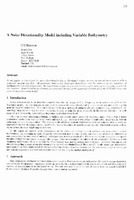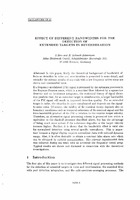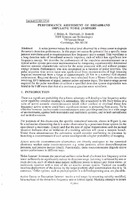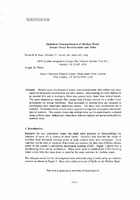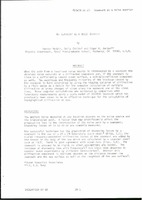Browsing Reprints by Subject "Noise"
Now showing items 1-5 of 5
-
A noise directionality model including variable bathymetry
(NATO. SACLANTCEN, 1997)In this paper we investigate the noise directionality due to distributed surface sources m several envtronments with a uniformly sloping sea bed. Of particular interest are frequency dependence and the question of the ... -
Effect of different bandwidths for the detection of extended targets in reverberation
(NATO. SACLANTCEN, 1993/08)In this paper, firstly the theoretical background of bandwidth effects on detection in noise and reverberation is presented in some detail, and secondly the relevant results of sea. trials with a low frequency active sonar ... -
Performance assessment of broadband impulsive noise jammers
(NATO. SACLANTCEN, 1993/08)A noise jammer raises the noise level observed by a threat sonar to degrade the sonar's detection performance. In this paper we assess the potential for a specific noise jammer waveform used to countermeasure low frequency ... -
Statistical characterization of shallow-water bistatic sonar reverberation and noise
(NATO. SACLANTCEN, 1993/08)Shallow-water, low-frequency bistatic sonar measurements often exhibit high noise caused by bathymetric reverberation and other sources. Understanding the noise statistics is an essential first step in developing filters ... -
The seamount as a noise barrier
(NATO. SACLANTCEN, 1982/06)When the path from a localized noise source is intercepted by a seamount the shielded noise consists of a diffracted component and, if the seamount is close to a sufficiently smooth ocean surface , a multiply-reflected ...
